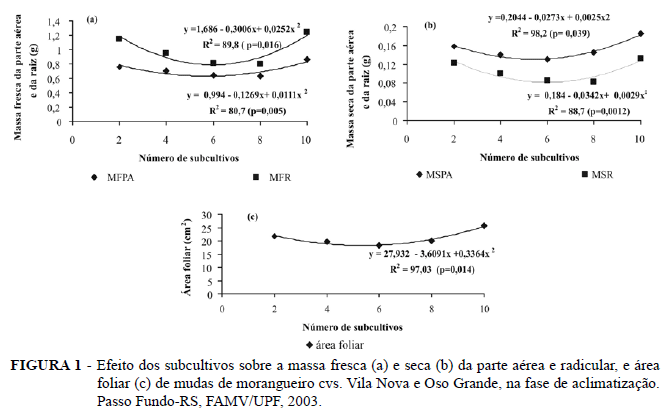Strawberry is a vegetative propagated plant, what makes it easier for virus contamination through infected plantlets. The use of matrix plants generated by in vitro shoot apex cultivation has being useful to regenerate free pathogens plants. To preserve the genetic identity and to maintain the high multiplication rate, most micropropagation protocols are based on four subcultures. With the objective to elevate the efficiency of the micropropagation process, two strawberry cultivars (Oso Grande and Vila Nova) were submitted to nine subcultures, and it was evaluated the multiplication rate and the occurrence of somaclonal variation. While cultivated in vitro, it was evaluated the multiplication rate, plant height and number of leaves by propagule. At the acclimatization stage it was determined the survival rate, leaf area, aerial and root fresh and dry weight. The clones obtained from the matrix plants were evaluated in relation to the agronomic behavior during the fruit production stage in a protected environment. The highest in vitro multiplication rate was observed during the second and third subculture, with the average of seven to eight propagules per explants, respectively. It was not observed phenotypic alterations in the two cultivars during the micropropagation process, acclimatization and growth in a protected environment. The Oso Grande cultivar presented higher agronomic performance when compared to the Vila Nova cultivar.
Fragaria X ananassa Duch; somaclonal variation; in vitro multiplication rate; micropropagation






